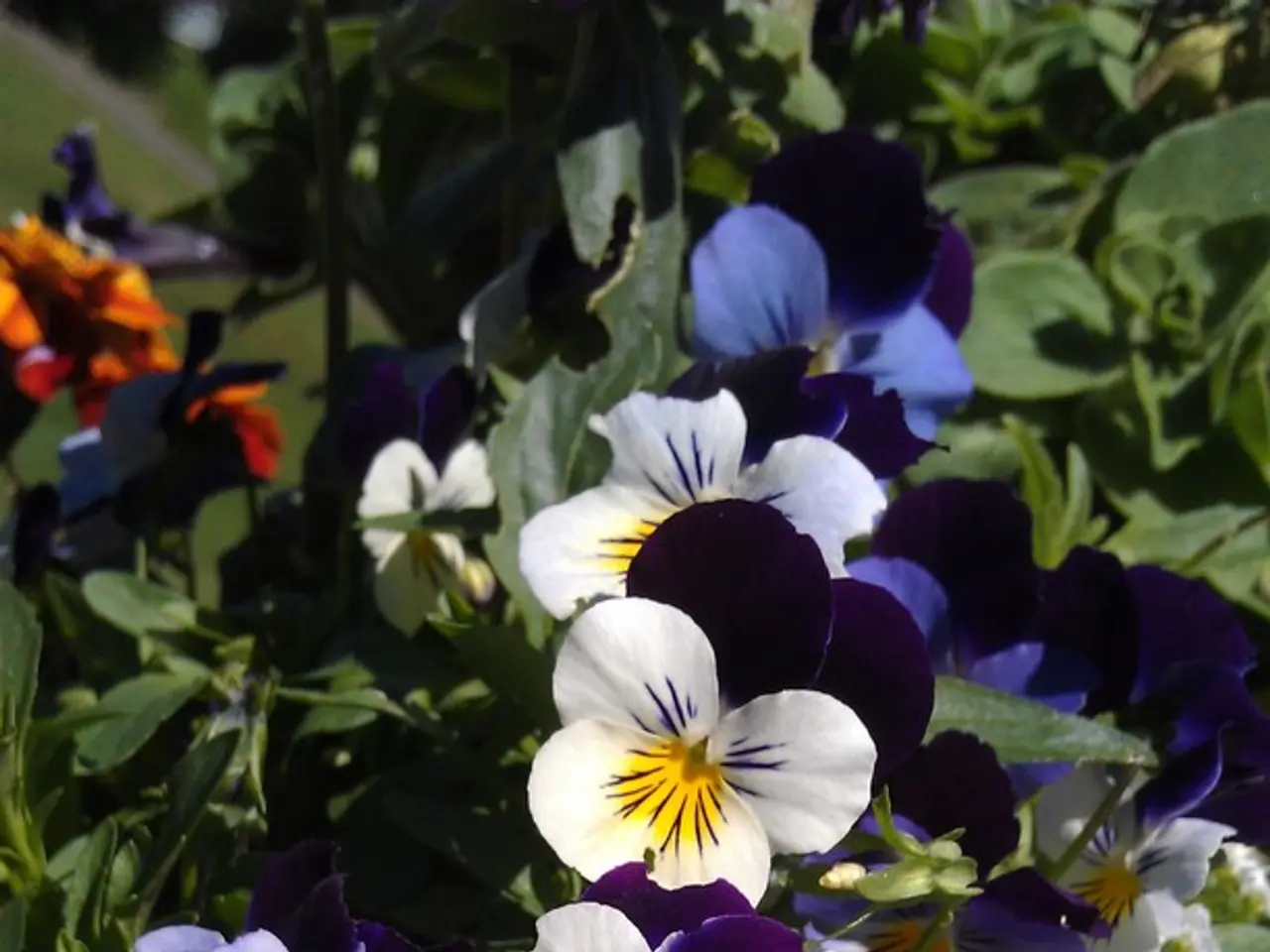Tips for Cultivating Nasturtiums: A Step-by-Step Guide on Sowing, Tending, and Reaping Nasturtium Plants
In gardens and window boxes alike, nasturtiums are a vibrant addition, attracting beneficial insects and pollinators while offering a burst of colour. Here's a guide on how to grow and care for various nasturtium varieties in containers.
### Choosing Nasturtium Varieties for Containers
Nasturtiums come in two main categories: bush and trailing or climbing types. For compact, bushy varieties suitable for pots and window boxes, consider 'Nasturtium ‘Little Gem Mix’' or Alaska. For hanging baskets, opt for trailing varieties such as Jewel Mix or Jewel of Africa Mix, which boast a cascading growth and larger flowers. For unique colours, consider Empress of India, Baby Rose, Baby Yellow, or Purple Emperor varieties.
### Planting Conditions
Nasturtiums thrive in a spot with plenty of sunlight, which is more important than soil quality for good flowering. Use well-draining soil, and avoid nitrogen-rich soils that cause excessive leafy growth at the expense of blooms. To prevent yellowing leaves caused by damp roots or poor drainage, avoid over-watering.
### Sowing and Growth
Sow seeds directly into window boxes or pots after the last frost, between March and June, for blooming from June to September. Nasturtiums are hardy annuals and grow quickly, flowering within a few months.
### Care Tips
Avoid over-fertilizing, as too much fertilizer encourages foliage rather than flowers. Deadhead spent flowers to encourage more blooms, particularly useful in container-grown plants to prolong flowering. Keep soil moist but never waterlogged, and avoid letting roots sit in water to prevent root rot. Some varieties like trailing nasturtiums can climb if given a trellis in pots or baskets.
### Summary Table: Nasturtium Varieties for Containers
| Variety | Growth Habit | Height (inches) | Use | Flower Colors | |--------------------|--------------------|-----------------|----------------------------|-----------------------------| | Alaska | Compact, bushy | 10-12 | Window boxes, containers | Orange, yellow, red | | Little Gem Mix | Dwarf, bushy | ~12 | Window boxes, pots | Mixed bright colors | | Jewel Mix | Trailing, vigorous | 12-18 | Hanging baskets, borders | Orange, yellow, red, mahogany| | Empress of India | Compact | 12-14 | Containers, borders | Deep crimson | | Jewel of Africa Mix| Trailing | Variable | Hanging baskets, ground cover | Mixed bright colors |
By selecting the proper variety, providing plenty of sun, using well-draining soil with minimal fertilizer, and careful watering, nasturtiums can thrive and provide vibrant, lush blooms in window boxes and hanging baskets throughout the growing season.
- Selecting the right variety is essential in growing nasturtiums in containers, with options like 'Nasturtium ‘Little Gem Mix’', Alaska, Jewel Mix, Jewel of Africa Mix, Empress of India, and Baby Rose suitable for various container settings.
- In terms of growth habits, bush varieties such as Alaska and Little Gem Mix offer compact, bushy forms, while the trailing varieties, Jewel Mix and Jewel of Africa Mix, are ideal for hanging baskets due to their cascading growth.
- To enjoy a variety of colors, consider planting Empress of India, Baby Rose, Baby Yellow, or Purple Emperor for unique blooms.
- For optimal flowering, nasturtiums should be planted in a spot with ample sunlight, with well-draining soil and minimal fertilizer to encourage blooms over foliage.
- Sowing seeds for nasturtiums should be done directly into window boxes or pots after the last frost, from March to June, for blooming from June to September.
- Regular care for container-grown nasturtiums involves deadheading spent flowers, keeping soil moist but not waterlogged, and avoiding over-fertilizing to prolong the flowering season and maintain a lush, vibrant garden or home-and-garden lifestyle.




